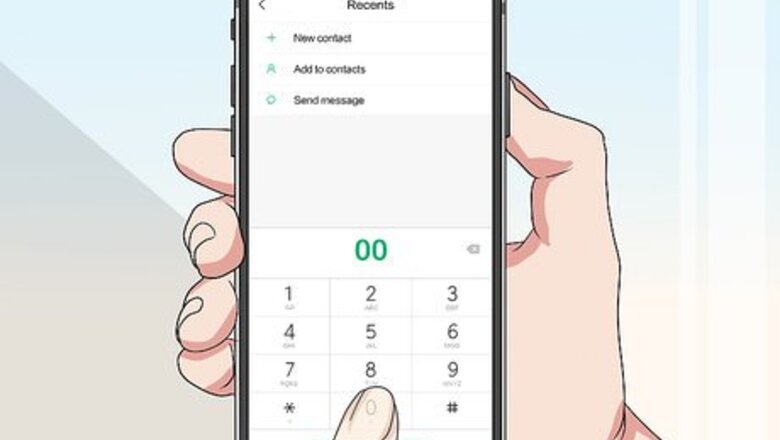
views
- Dial "00" to internationally route the call, then enter "44" to dial the UK.
- Finally, dial the number with the area code if you're using a landline.
- Enter a "7" in the beginning of the area code if you're calling a mobile.
Dialing a UK Number
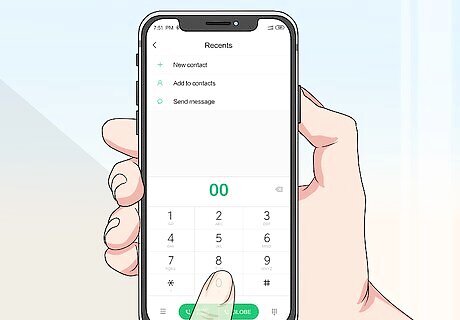
Dial 00 to route the call internationally. This exit code works for Spain and most of Europe. No matter where you are, the exit code routes your call outside of the country you are in. If you forget to type the exit code, you might end up calling someone in Spain! A basic UK number looks like 00+XX+XX+XXXX-XXXX. The first digits, 00, are the exit code and have to be dialed whenever you wish to connect to a number outside of Spain.

Input 44 to route the call to the UK. Every country has its own code, so dialing 44 always connects you to a UK number. The UK’s country code covers England, Scotland, Wales, and Northern Ireland. Remember that the country code comes after the exit code. Your calling number will look something like 00+44+XX+XXXX-XXXX.
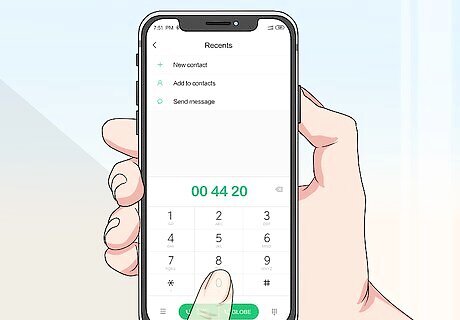
Include the area code for a UK city if you’re calling a landline. Besides using the international codes, reaching a UK number is like dialing a friend or local business. The area code comes next and it routes the call to a specific region in the UK. The area code you need depends on which part of the UK you wish to call. For example, the area code for London is 20, so you type in 00+44+20+XXXX-XXXX. UK area codes are sometimes as long as 4 or 5 digits. For instance, the code for Swansea is 1792. If you see an area code with a 0 in front of it, don’t input the 0. It’s only for domestic calls in the UK. For example, a 0141 area code for Glasgow becomes 141 when you’re abroad.

Use an area code starting with a 7 if you’re calling a mobile number. Calling a mobile phone is the same as calling a landline except for the area code. In the UK, each mobile number gets a 4-digit code starting with 7. The code you need depends on the phone carrier. Use this number instead of a city area code. For example, a mobile number might look something like 00+40+71XX+XXX-XXX. Exclude the 0 if the mobile code starts with it. Like with landlines, the 0 is for domestic calls, so you don’t need to worry about it unless you’re within the UK.
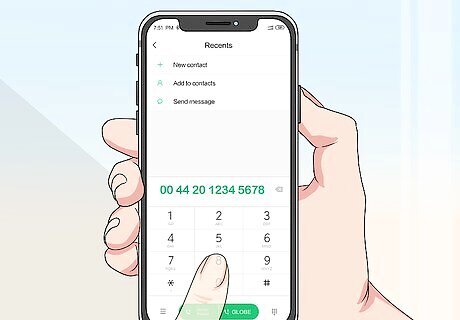
Finish dialing the full phone number to place the call. Complete the call with the person or business’ personal phone number. This is the phone number given to the recipient by their phone service provider. Phone numbers in the UK range from 4 to 8 numbers long depending on the length of the area code. To reach Cardiff, for example, type 00+44+29+XXXX-XXXX. The last 8 digits are the phone number of the person you wish to reach. To reach Aberdeen, type 00+44+1224+XXX-XXXX. The personal phone number is only 7 digits because of the longer area code.
Managing Fees While Calling

Buy prepaid calling cards to place cheaper calls to any number. Calling cards typically offer the lowest charge rate for international calls. You get the number of minutes listed on the front of the card. Calling cards work for both landlines and mobile numbers. When you make a call, type the calling card number first before inputting the country exit code. Calling cards are available in many locations, including online and in phone stores in Spain. You may also see them at airports, gas stations, convenience stores, or other areas travelers are likely to visit. Read the terms of service carefully on the back of each card. Make sure the card works from Spain for calls to the UK. Be aware of any hidden fees listed in the fine print.

Activate international calling on a mobile phone to reduce roaming. Speak with your phone service provider to set up an international calling plan. Roaming charges for mobile phones get pretty costly, so let your provider know you’re going to be calling internationally from Spain. Find out the charge rates on your data plan and ask for ways to reduce the cost if you need to make calls. When you get to Spain, your phone likely will pick up the network with the cheapest roaming fees. To check this, navigate to your phone’s settings menu. Select an option like “Carrier” or “Networks” to manually find and switch to other networks. Keep in mind that you have to pay to receive calls while roaming. If you think you might get a lot of calls, find cheaper alternatives to your regular calling plan.
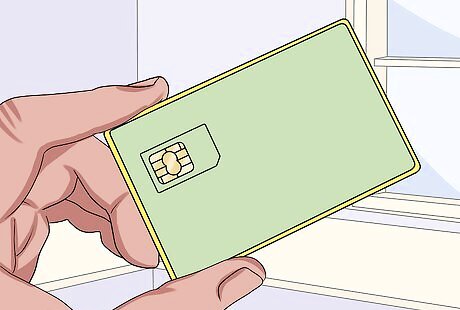
Purchase a Spanish SIM card to reduce mobile calling costs. When you have a SIM card, network providers consider your phone number to be a local Spanish number. You avoid a lot of roaming fees. SIM cards are available in various shops in Spain and the UK. To use the SIM card, you install it in your phone, removing the old SIM card if your phone has one. SIM cards are either prepaid or pay as you go, saving you money if you make multiple calls. SIM cards come in a variety of sizes, from nano to full size. Check your phone before buying a card and opt for a bigger size if you’re unsure. You can buy foreign SIM cards from some electronic and phone stores in the UK. In Spain, they are available at travel shops and banks.
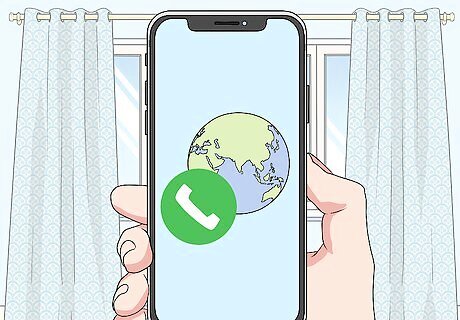
Switch to an international cellular plan if you make lots of calls. Many companies offer cell phones with plans tailor-made for people who travel. By using an international plan, you cut out a lot of the roaming and data charges you would otherwise rack up. Speak with your phone carrier for options or shop around to compare different plans. If you aren’t planning on staying in Spain for very long, try renting a phone or getting a pay-as-you-go international calling plan. If you plan on staying in Spain or traveling elsewhere, look for monthly calling plans. Many plans work with a cell phone you already own.
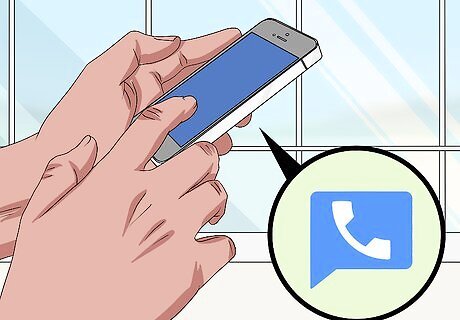
Call over an online app for free or reduced rates. Calling apps are available on cell phones as well as computers and tablets. They function on Voice over Internet Protocol (VoIP) technology, which uses an Internet connection to place calls at reduced rates. You need an Internet connection or mobile data to place a call through the app. For many apps, the other person you’re calling needs to have the same app installed. VoIP apps include Skype, Viber, FaceTime, and Google Hangouts. Some apps let you call landlines, but you need to purchase credits through the app. Check the calling rate to ensure it isn’t more expensive than the alternatives. Some phone companies sell VoIP phones or landline adapters, allowing you to place lots of calls at a reduced rate.
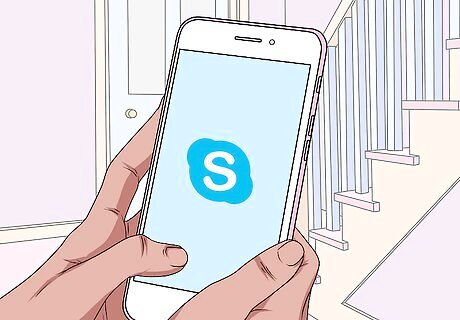
Get a video messaging app to place free video calls over the Internet. Download a messaging app like Whatsapp, Facebook Messenger, or FaceTime on your phone or device. The person you wish to call also needs to have the app, which means you can’t call landlines this way. Once both of you are logged into the app, tap on the other person’s name to start a video call. Video calls are free as long as your device is connected to WiFi. If you’re not on WiFi, it will use your phone data, so be aware of data limits and charges from your service provider.




















Comments
0 comment